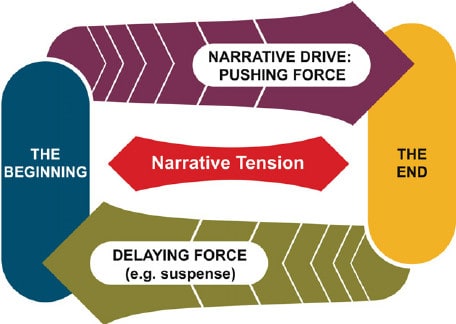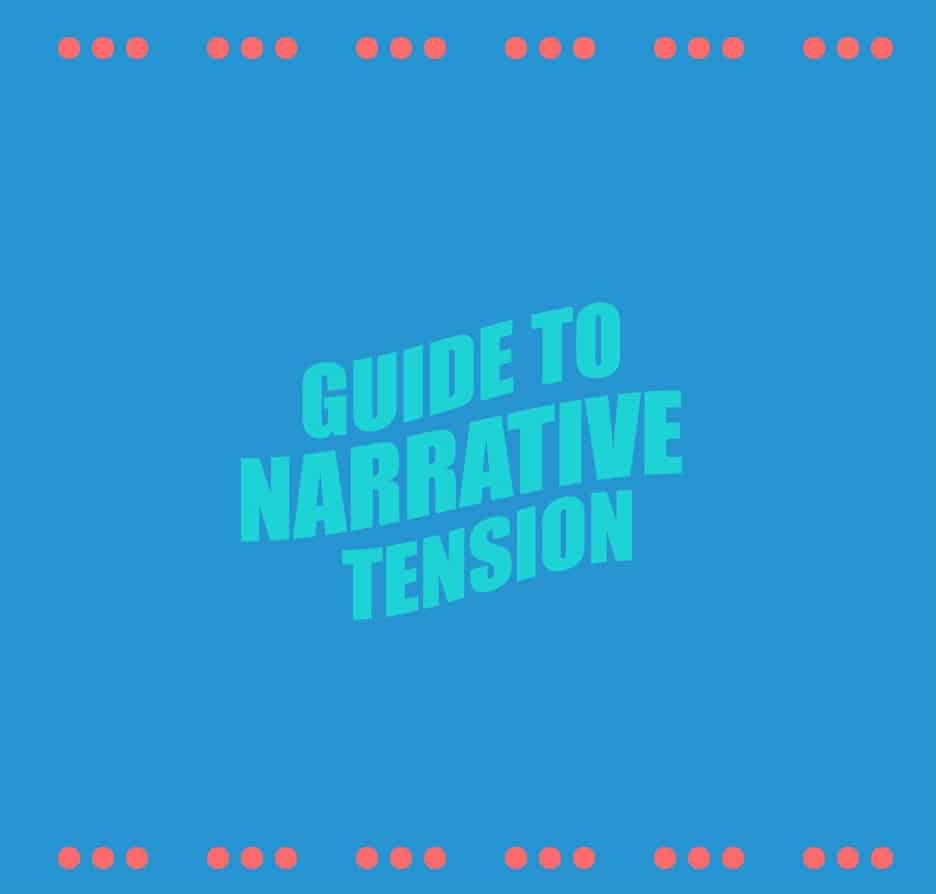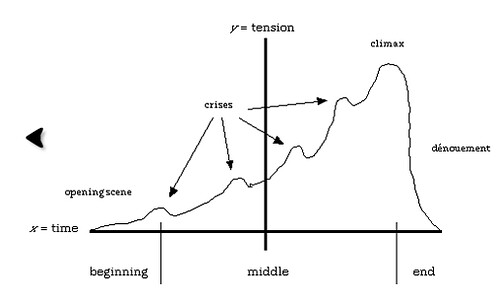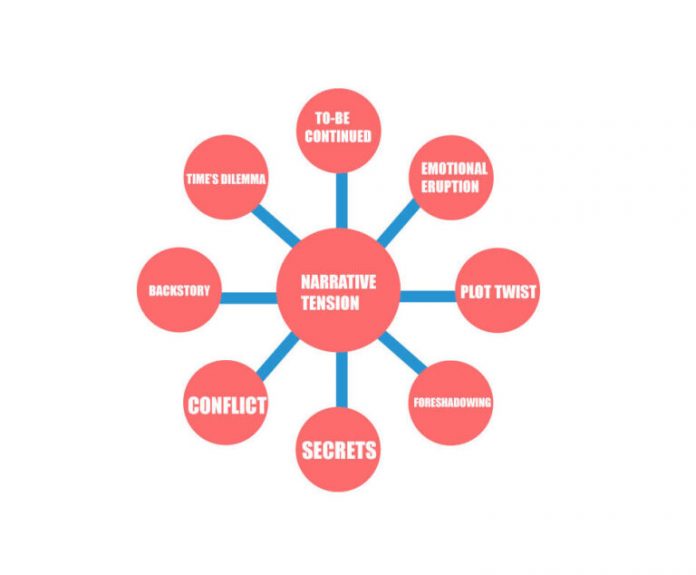Narrative tension is one of those terms that you hear in literature once in a while but don’t always know what it means. Here you will learn what narrative tension is, along with examples. Also, you will learn how narrative tension works with concern to story pacing.

Narrative Tension Definition
Narrative tension is essentially the suspense that keeps the reader reading. It is what makes a reader wonder what will come next. It could be a series of unanswered plot questions. It could be a deep dark secret about a character that the reader is just dying to know. In any event, it needn’t be any one thing, but suspending the reader is the desired effect.

This tension can begin as early as the first sentence in a story. A writer can use multiple strategies to build narrative tension, and even relieve some of it along the way, but very often the writer will at least try to let the reader care about those unanswered questions for as long as possible. The most important secret or point of suspense should carry the narrative tension along to the climax.
Narrative Tension Example
Stephen King’s 1977 novel The Shining is a good example of narrative tension. Also, the story is a fairly familiar one. The novel embodies quite a bit of build up until the climax. We know that a tragedy has occurred in the Overlook hotel due to cabin fever. Because of the nature of the job that Jack Torrance accepts, one will believe that it will happen again. The reader has expectations and may expect something to happen right away.

However, the most of the novel is spent building up this suspense. Jack descends into madness (in the novel, at least), rather than going crazy from the outset. The reader is forced to wait for this scenario rather than having it handed to them.
The novel’s climax is much later in the novel and leaves the reader in suspense for a very long time. Indeed, the reader will expect murder from the start, but they do not actually get it until the very end. This is a poignant example of narrative tension.
Creating Narrative Tension in Writing

Unrelieved tension is painful. This narrative tension should be relieved at the climax or shortly thereafter. Anything after that is the story’s denouement and is the point in which the fallout from the climax comes together.

If you’re writing the story, try and make sure that you’ve relieved this tension at the climax. Any remaining unanswered questions should be answered during the denouement.


















